Hawaii is once again making waves—this time, quite literally, in a world increasingly turning towards new technology.
With the recent deployment of the world’s first grid-scale wave energy device at a U.S. Navy test site off the coast of Oahu, Hawaii is making bold strides in this new area. This project not only aligns with Hawaii’s goal of achieving 100% renewable energy by 2045, but also opens new opportunities for the state’s vital tourism industry, as you’ll see below.
The OE-35, pictured here, is a 826 ton buoy in the ocean off of Honolulu, that can produce 1 1/4 megawatts of power. It was paid for in part by the US Department of Energy.
Hawaii’s commitment to sustainability in energy.
The latest deployment of the wave energy device represents a significant milestone for the islands. Wave energy, generated here from the natural motion of Pacific Ocean waves, is said to offer a consistent and reliable source of power, complementing other renewable sources including solar and the latest wind power we recently wrote about.
The islands’ unique geographical position, with vast open ocean coastlines and consistent wave patterns, makes it an ideal testing ground for such pioneering technologies. But beyond energy production alone, this puts Hawaii in a unique position to enhance the state’s appeal as a premier sustainable tourism destination. That is, however, if everything comes together as hoped.
Overview of wave energy technology.
Wave energy technology harnesses kinetic energy produced by ocean waves. The recently deployed device is located at the U.S. Navy’s Wave Energy Test Site (WETS) located off of Honolulu.
This device converts the up-and-down motion of waves into electrical power through a unique process. As waves move, they push against a floating buoy connected to a hydraulic pump. The mechanical energy from the wave motion drives the pump, producing electricity. The generated electricity can then be transmitted directly to the power grid or stored in batteries.
One of the advantages touted about wave energy is its consistency compared to either solar or wind power. Ocean waves are less variable and more predictable, thus offering a more reliable energy source. Additionally, since water density is much greater than air, wave energy devices are said to generate more power with smaller movements compared to wind or solar. This may makes wave energy especially attractive for coastal locations like Hawaii.
Impact on Hawaii tourism: riding the wave of eco-friendly development.
The intersection of renewable energy and tourism offers an interesting new perspective for promoting Hawaii as a destination. Modern travelers are becoming, in theory, more eco-conscious, and destinations are clearly seeking to prioritize the environment and offer unique, sustainable experiences. The wave energy project may help catapult Hawaii into such a destination that not only speaks to the natural beautiful here, but also to committing to preserve Hawaii for future generations.
Eco-friendly attractions: This wave energy project could actually become a unique attraction in itself. Similar to how wind farms and solar plants can become educational tourist sites, Hawaii could include guided tours of the wave energy facilities. This might also provide a unique appeal to families, and other eco-interested tourists.
Sustainable tourism infrastructure: As Hawaii continues to expand in renewable energy, the infrastructure supporting tourism should also become greener. Hotels, resorts, and tourist facilities powered by renewable energy sources, including wind and wave energy, might appeal to different and arguably more desirable travelers. This shift could be highlighted in innovative marketing strategies that promote Hawaii as a sustainable tourism leader.
Big challenges and opportunities ahead.
While the deployment of wave energy technology presents interesting and exciting possibilities, challenges remain. Issues include infrastructure development, environmental impact analysis, and community engagement.
Environmental impact will see whether wave farms could negatively impact marine animals in various ways. Also, the buoy anchors need to not damage the sea floor. The noise produced by the turbines is another issue to be evaluated, as are electromagnetic fields and any possibility of toxic chemicals in the water.
These are just some of the challenges that need to be addressed. Hawaii’s ability to address these issues will prove key to the potential future adoption of wave energy in the both Hawaii Tourism and Hawaii energy sectors.
Conclusion: will Hawaii catch this wave of sustainable tourism?
As Hawaii advances in various forms of renewable energy innovation, it also opens up new horizons for tourism. The wave energy project may become more than just technology; it adds to the opportunity of redefining Hawaii in terms of a sustainable visitor destination.
We welcome your thoughts on Hawaii wave energy.
Get Breaking Hawaii Travel News
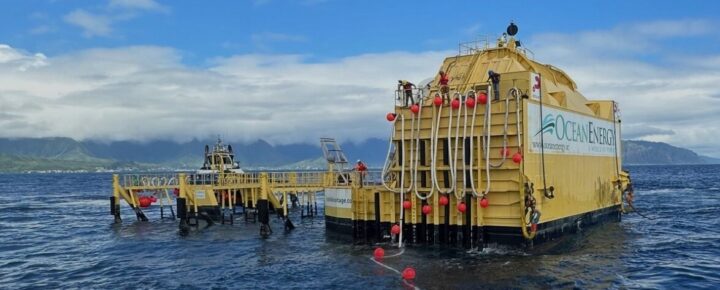
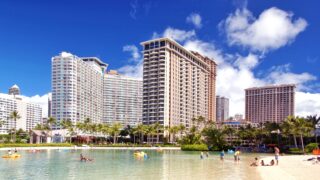
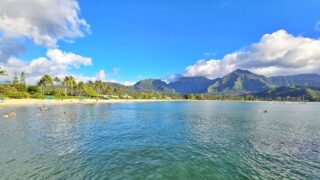

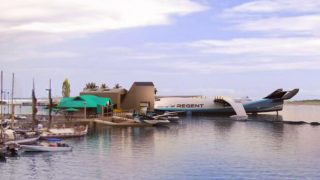

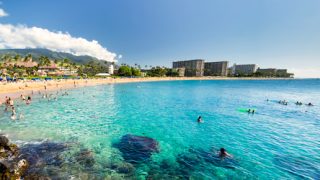
Energy diffuse technologies like wind, solar, and wave/tidal are more expensive and less reliable than energy dense technologies. In Hawaii, we can leverage solar and wind, but it is not without environmental impacts and it will always need a reliable backup energy source. We should use renewable where it makes economic sense, but transition to natural gas and nuclear as our primary energy sources.
China & India burn cheap Australian coal to generate electricity – and we get this…
Bottom line no one wants to deal with: our entire modern standard of living is not possible without oil / coal / natural gas / nuclear.
Outsourcing our pollution to poor countries so that we can be “green” is not the answer.
Drastically reducing population is the only way “renewables” work…
I’m not sure what point you’re trying to make here, but renewables absolutely do work. Renewables made up 33% of Oahu’s electric supply in 2023, with a peak of nearly 75%. If this technology pans out, 10 of these unobtrusive buoys could supply around 20% of Oahu’s demand. The worst thing we can do is to continue to import expensive oil, just to burn it.
Well, it is certainly less ugly than 300 ft tall wind turbines. Probably quieter too. I spent a night attempting to sleep near one of the larger ones that was installed in the Kahuku’s above Turtle Bay on Oahu in the 80s when I was stationed at Schofield. Whoop, whoop, whoop, whoop…. all night long as I remember.
I suppose that they will sell the excess energy to HECO for about $.09 kwh and charge the residents of Hawaii $.45, saying that they’re charging this much so they can stay in business? Not so they can maintain profitability?